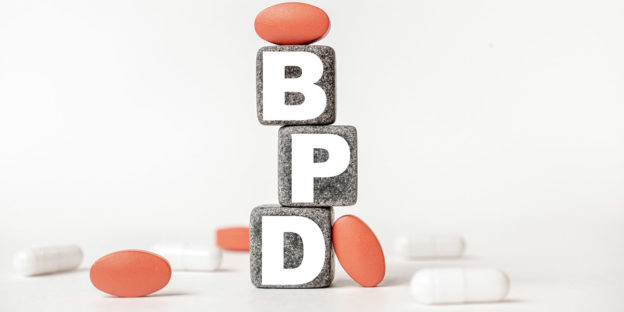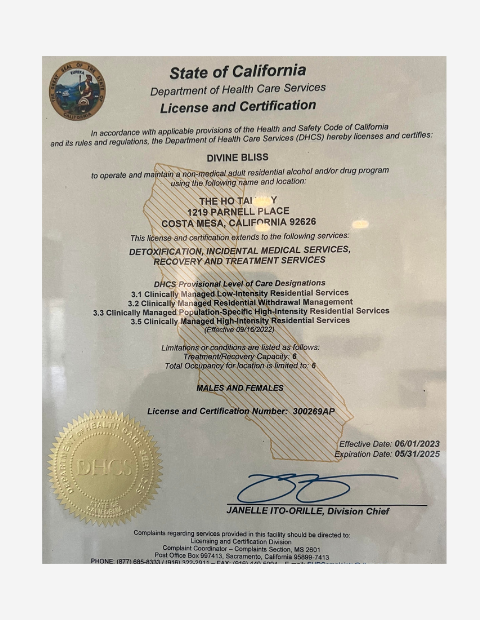Personality is the characteristics that makeup who we are. These characteristics impact the way we think and react. So, what do personality disorders mean?
Personality disorders are a pervasive pattern of rigid behavior that makes it challenging to respond to life and others’ demands. They also interfere with maintaining relationships, which can lead to distress, isolation, and other mental health issues.
The American Psychiatric Association’s (APA) Diagnostic and Statistical Manual of Mental Disorders fifth edition groups personality disorders into three clusters. This blog will focus on Cluster B, specifically, borderline personality disorder.
Cluster B personality disorders are characterized by emotional, dramatic, and erratic behavior and include:
- Antisocial personality disorder
- Borderline personality disorder
- Histrionic personality disorder
- Narcissistic personality disorder
What is Borderline Personality Disorder?
In 1938, psychiatrists termed “borderline” because they thought it described people who tended to regress to “borderline schizophrenia.” Neuroses were considered to be treatable, whereas psychoses were not.
In the 1970s, psychoanalysts described borderline as the middle between psychosis and neurosis. It was believed that people with borderline personality disorder used primary defenses like splitting and projective identification.
Splitting is the inability to hold opposing thoughts. Things are either black or white. There is no gray. I love you; I hate you is a common theme in borderline personality disorder. This dichotomy presents as embracing things deemed “good” while rejecting those considered to be “bad.” Holding on to what is considered “good” can be harmful, especially if the person seen as “good” contributes to substance use.
If you are familiar with the cognitive-behavioral distortions, you might already be familiar with the concept of splitting. Black/white thinking or all or nothing thinking is pretty common. The difference is that it is a consistent and distorted behavior accompanied by other symptoms with a borderline personality disorder.
Projective identification is when the person with borderline personality disorder projects their feelings onto the person they identify with. The result is that the aggressive urges are maintained, and the fear of the urges increases. To compensate, the person with borderline controls or attacks the other person before they can attack. This cycle perpetuates the push-pull, I love you; I hate you.
It is believed that persons with a borderline personality disorder do not have a strong ego. Ego strength refers to the ability to balance between the id (impulse or primal drive), the superego (morality), and reality.
Those who exhibit high ego strength tend to be confident in dealing with challenges and high emotional intelligence.
Those with low ego strength tend to avoid challenges and lack resilience. Challenges appear to be too overwhelming to handle, and the result might be either to give up or to break down.
How is Borderline Personality Diagnosed?
Borderline is characterized by pervasive patterns of instability in interpersonal relationships, self-image, emotion, and impulsivity. It usually begins in early adulthood in many contexts indicated by five (or more) of the following symptoms:
- Frantic efforts to avoid real or imagined abandonment.
- A pattern of unstable and intense interpersonal relationships is characterized by alternating between idealization and devaluation (splitting).
- Identity disturbance with markedly or persistently unstable self-image or sense of self.
- Impulsivity in two areas that are potentially self-damaging (e.g., spending, sex, substance abuse, reckless driving, binge eating).
- Recurrent suicidal behavior, gestures, threats, or self-mutilating behavior.
- Rapid and intense mood swings are difficult to control, like irritability or anxiety that lasts a few hours.
- Chronic feelings of emptiness.
- Inappropriate, intense anger or difficulty controlling anger.
- Transient, stress-related paranoid ideation or severe dissociative symptoms.
Diagnosing borderline personality disorder is completed by a licensed mental health professional trained in treating these symptoms.
Self-diagnosis is dangerous and can create other problems like depression or anxiety. Express any concerns you might have about the above symptoms with your therapist.
How is Borderline Personality Disorder Treated?
A team approach can include your psychiatrist, therapist, psychiatric nurse, pharmacist, and social worker. The team works together to provide the best possible combination of treatments.
While in detox or residential treatment, your team will work with you and one another to create a treatment plan. A treatment plan consists of goals and objectives to work toward abstinence, building coping skills, and managing your symptoms in a healthier way.
A combination of medication and psychotherapy is the best treatment for borderline personality disorder.
Medication can include the following:
- Antidepressants can help with sadness, low mood, anxiety, and emotional reactivity.
- Antipsychotics can help reduce anxiety, paranoid thinking, anger and hostility, and impulsivity.
- Mood stabilizers/anticonvulsants are used to treat impulsivity and rapid emotional changes.
- Anxiolytics used with borderline personality disorder are not well researched, but they can help with anxiety.
Your psychiatrist or physician will work with you to prescribe the right medication for you if needed.
Psychotherapy is an essential aspect of treatment and might include the following modalities:
- Dialectical behavior therapy (DBT). DBT is a form of cognitive-behavioral therapy (CBT) and was the first effective treatment for borderline personality disorder. DBT teaches skills to manage distress and to cope with strong emotions. Clients will also learn mindfulness skills to increase awareness of the present moment without judgment.
- Schema-focused therapy. Schema-focused therapy uses CBT and psychoanalysis to explore how unmet childhood needs led to unhealthy thinking about the world. The beliefs and behaviors are challenged, and the client is taught healthier coping skills.
- Transference-focused psychotherapy. Transference-focused psychotherapy is as good as or better than DBT. Transference is the transferring of feelings from past experiences to a person in the present. The relationship between client and therapist is the catalyst for change by bringing awareness to the transference so that the client can respond more effectively in other relationships.
The Ho tai Way – Recovery for Women is here to help you work through your substance abuse and personality disorders. Get the help you deserve and begin the journey to your new life—Call (714) 581-3974 to get started today.









